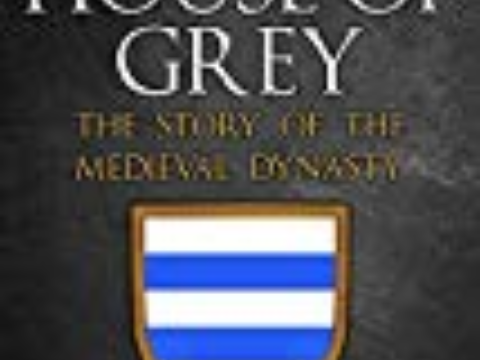Elizabeth and Essex: the Deadly Game of Courtly Love
Chapter 3 : Reputation
It was two years afterwards, on the anniversary of Essex’s death, that Queen Elizabeth retired to her chamber, never again to leave it. A conversation recorded by the antiquary William Lambarde suggests she might have come to see her relationship with Essex and its catastrophic close as having been in part manipulated by those around them - the Cecils, Ralegh -with ‘the wit of the fox’. James of Scotland, hastening to assume control of Elizabeth’s country, would soon be referring to Essex as ‘my martyr’. But there is another, more lasting, tribute from those years. Wrote the great literary historian John Dover Wilson in 1935: ‘I believe, as many others have believed, that this conception [of Hamlet] first came to Shakespeare from the career and personality of his patron’s hero, the brilliant, melancholy and ill-fated Earl of Essex’.
In the years that followed, perhaps perceptions of Essex followed those of Elizabeth herself. The eighteenth and nineteenth centuries envisaged an Elizabeth torn between the demands of love and duty with Essex, like Leicester before him, caught up in the tug of war. Donizetti’s 1837 Roberto Devereux painted Elizabeth’s execution of Essex as revenge for his having fallen for another woman, the Countess of Nottingham. In the early twentieth century, however, Lytton Strachey’s psychobiography Elizabeth and Essex reinvented Elizabeth yet again as what one analyst called ‘a post-Freudian hysteric .. . not quite fully heterosexual’. (As conflicted as Strachey himself, basically.)
As Strachey wrote of Essex’s downfall : ‘Manhood – the fascinating, detestable entity, which had first come upon her concealed in yellow magnificence in her father’s lap – manhood was overthrown at last, and in the person of the traitor it should be rooted out.’ He described an Elizabeth filled with ‘a deep-seated repugnance to the crucial act of intercourse’ but nonetheless ‘filled with delicious agitation by the glorious figures of men’ - one in whom, in her relationship with Essex, ‘desire had turned to repulsion’. This was effectively the source of the Bette Davis/Errol Flynn movie, The Private Lives of Elizabeth and Essex, as well as of Benjamin Britten’s 1953 opera Gloriana.
Strachey, a member of the Bloomsbury set, was writing in a time when gender roles were assessed with a new fluidity. We are now in another. And yet despite that - or because of it? - Strachey’s interpretation has never, to date, entirely gone away.
The whole period of Essex’s prominence - what John Guy led the way in calling Elizabeth’s ‘second reign’ - has had less than due attention in popular history. We’ve preferred, on the whole, to admire the iconic Elizabeth of the Armada years, and then fast forward to 1603 for a fast farewell, and a cursory nod to Time’s ravages. Academic work (notably that of Paul E.J. Hammer at the turn of the millennium and, more recently, of Alexandra Gadja) has tended to focus on Essex’s political goals, rather than on the mechanism - his personal relationship with Elizabeth - he used to promote them.
This is, of course, a useful corrective to the traditional view that saw Essex, like Elizabeth’s other favourites, as merely a pretty plaything; evidence of womanly weakness underneath Gloriana’s armour. (Indeed, the question of a powerful woman’s partners or favourites - just how the heart confronts the head - is a big one: too big to tackle here, unfortunately.)
Full disclosure again: I am no admirer of Essex. (What, you already guessed that from all those words like ‘incompetence’ and ‘vainglory’?) But I have asked myself to what degree that view is coloured by enduring prejudices? - whether I would have felt differently about him had he been a young woman with ambitions and dreams, and Elizabeth a powerful, older, male? I then discovered that Steven Veerapen, in his fascinating Elizabeth and Essex: Power, Passion and Politics, found himself up against precisely the same question...I began The Tudors in Love with the picture in my head of a dynasty besotted with the idea of romance. I came to realise that might, yes, be true - but it was others (Anne Boleyn, Katherine Howard, Robert Devereux) who paid the ultimate price for their fantasy.
Many years ago, writing an earlier book, Elizabeth and Leicester, I found myself at odds with one of the grand old authorities, Martin Hume, who, writing in the Edwardian era of Elizabeth’s political courtships, had dismissed her ‘non-political philanderings’ as being of little account.
I declared then that Hume was wrong - that with Elizabeth, the personal was always political. Perhaps we need to apply that rule to this last great relationship of her reign, her relationship with the Earl of Essex - and perhaps then we will see it differently.










